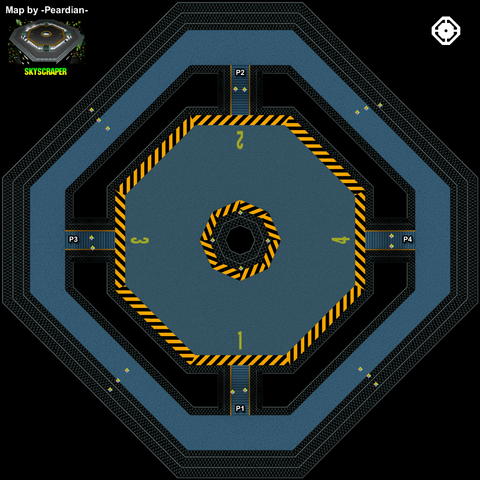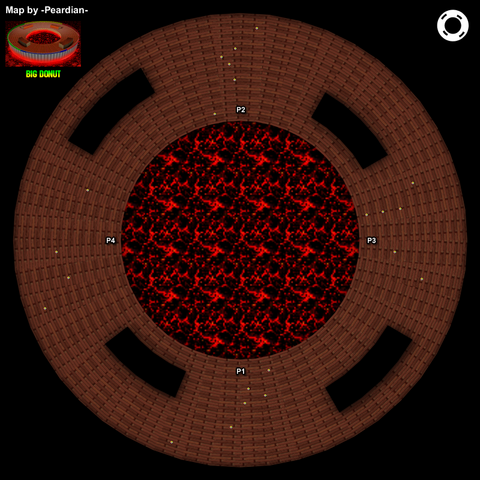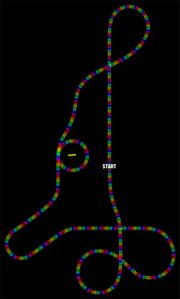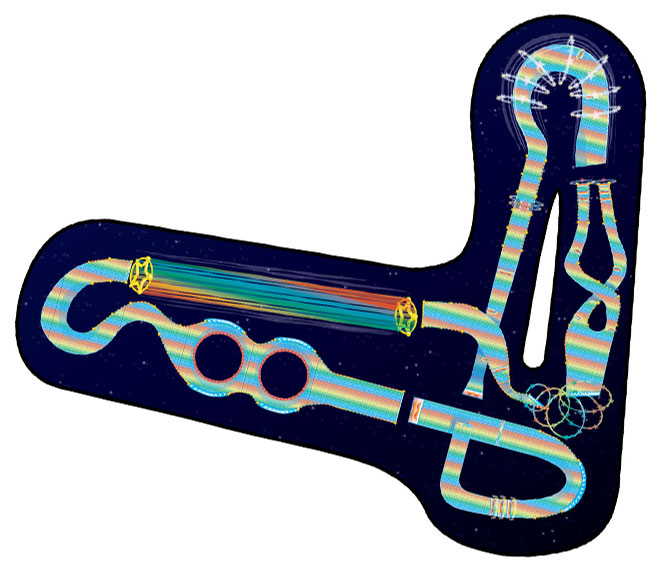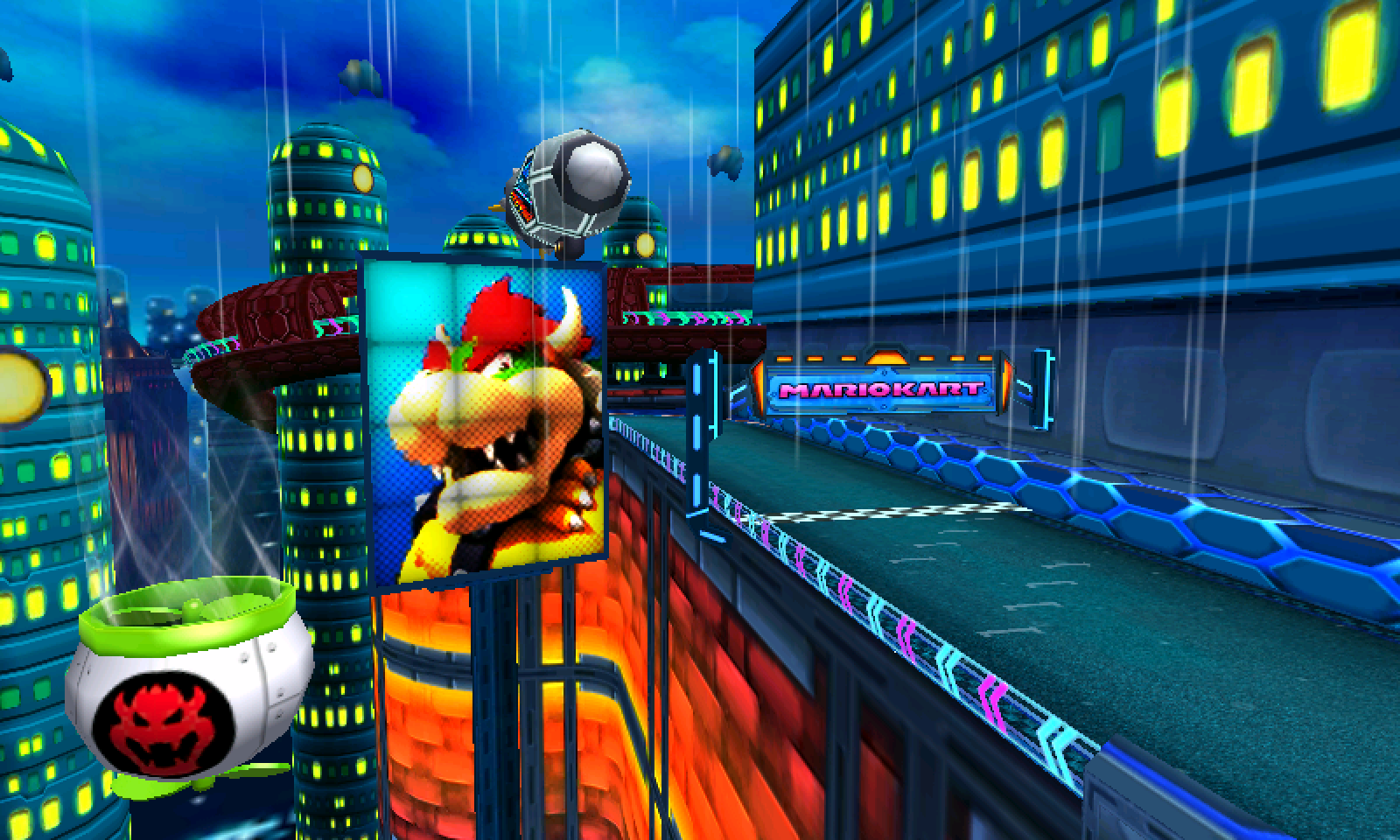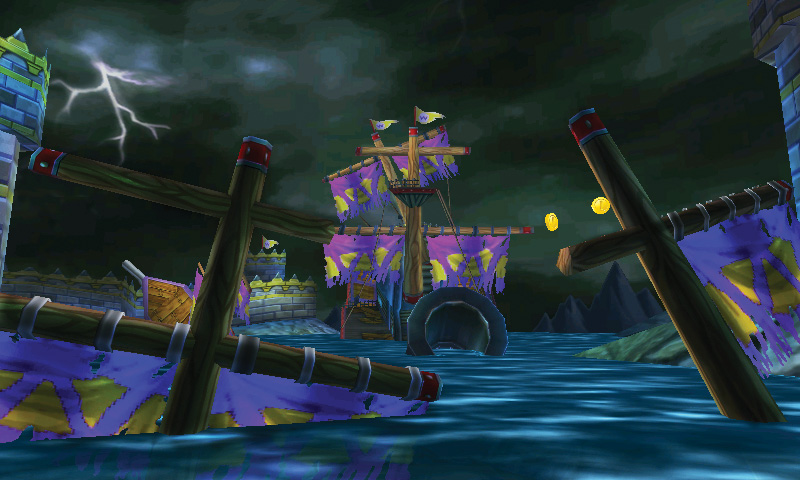History:
When the first Grand Prix Council got together to determine what Items would be used, Bowser proudly volunteered an offensive options: The Koopa Shell. At first he only supplied standard Green Shells, but eventually his Shell Technology grew more sophisticated. He added homing powers with Red Shells from Paratroopas and finally, the Blue Spiny Shell, one of the most rare and deadly of any of the Mario Kart Items. For the 2003 Tournament he added his own Bowser Shell, the most monstrous and gigantic of all Shells.
The Green Shell Appears in:
SMK
64
Super Circuit
Double Dash
DS
Wii
7
The Green Shell is one of the most basic, stalwart offensive options in Mario Kart. It has hardly changed since its earliest days in Mario Kart History. Once fired it travels in a straight line, bouncing off any solid wall until it crashes into a racer or falls off an edge. It can also be used defensively, being held behind a Kart similar to a Banana, where it will absorb the hit of any other Shell or shell-like item (This option was unavailable in Double Dash). It can be fired behind the racer when held here, which is helpful in some instances, for instance if a player is far ahead and there is a higher danger of firing it forward.
The Triple Green Shell Appears in:
64
Super Circuit
Double Dash*
DS
Wii
7
The Triple Green Shell in practice acts exactly like a Green Shell, a straightforward projectile. It is also a very able defensive weapon, though, because once activated, all three shells will encircle a player. If drivers run into anyone else, the result will be as if the opponent had hit a Green Shell. Players are still susceptible to damage, though, if an Item penetrates the Shell Guard players will still flail out. This is less an issue when all three are activated but when only one or two shells are circling around players are more vulnerable. Of course, they are no more vulnerable than if they had nothing at all.
*In Double Dash this was a Special Item reserved for Koopa Troopa and Paratroopa. The Shells did not encircle the players, making them less useful defensively, but still a great offensive option.
The Red Shell Appears in:
64
Super Circuit
Double Dash
DS
Wii
7
The Red Shell has been a staple of Mario Kart games from 64 on. It fires forward like a Green Shell, but instead of traveling in a straight line and then bouncing off walls it homes in on the closest player ahead in the race. It will become defunct if it strikes a wall though, necessitating a degree of precision during Battle Matches with many walls, such as SMK's Battle Course 4.
The Triple Red Shell Appears in:
64
Super Circuit
Double Dash*
DS
Wii
7
The Triple Red Shell once activated acts exactly like the Triple Green Shell, encircling and protecting players. Once fired they act exactly like Single Red Shells, homing in on enemy players.
*In Double Dash this was a Special Item that only Koopa Troopa and Paratroopa could use. They did not circle around the Kart, making them less useful defensively, but they are very valuable to use to specifically attack a wide number of opponents.
The Blue Spiny Shell Appears in:
64
Super Circuit
Double Dash
DS
Wii
7
This is another fairly rare and legendary Item. It often comes up while racers are near the back of the herd and is one of the only such weapons that his used offensively from back there. Using the shell's wings, it flies and seeks out whoever is in First Place and messes up their day. From Double Dash on the disaster has become more significant, causing a great Blue Explosion that will also engulf any players driving around the Blue Shell.
It is possible to avoid the Shell, but this is tricky and lucky to do. The key is that the Shell doesn't pick its victim until that final plunge, which is where you can escape. Still, there are dangerous parts of the track where getting hit is not only inescapable, it proves disastrous. This includes over any gap and particularly in Mario Kart 7 in many Air Portions.
The Bowser Shell Appears in:
Double Dash
The Bowser Shell is the Special Item of Bowser and Bowser, Jr. in Double Dash and is a pretty useful item. The enormity of the shell takes up most of any track and it will clobber anyone in its path. There is some caution when throwing it forward though, as the thrower may become a victim as well. It's best on straightaways shot directly behind to annihilate anyone who is considering challenging you. It can be disrupted by Giant Bananas, although it will destroy the Banana, as well as Hearts, which can pick it up to be used by either Peach or Daisy.
The Yoshi Egg Appears in:
Double Dash
The Yoshi Egg has properties very similar to Shells, so it is included here. Technically the Yoshi Egg is the Special Item of Yoshi (as well as Boo and Petey Piranha) and a pink version, the Birdo Egg is the Special Item of Birdo. Both have exactly the same function and operate basically like a Red Shell, seeking out and destroying whoever the next in line is. The key though, is that once struck, the Egg will crack open with Items such as Stars, Mushrooms, Bananas, or Stationary Green Shells. It could also pop open a Bob-Omb. All this means that the Egg could either be very beneficial to the user, or it could be hazardous. It's even possible that the enemy struck will come away with a star. It's not that useful.
When the first Grand Prix Council got together to determine what Items would be used, Bowser proudly volunteered an offensive options: The Koopa Shell. At first he only supplied standard Green Shells, but eventually his Shell Technology grew more sophisticated. He added homing powers with Red Shells from Paratroopas and finally, the Blue Spiny Shell, one of the most rare and deadly of any of the Mario Kart Items. For the 2003 Tournament he added his own Bowser Shell, the most monstrous and gigantic of all Shells.
The Green Shell Appears in:
SMK
64
Super Circuit
Double Dash
DS
Wii
7
The Green Shell is one of the most basic, stalwart offensive options in Mario Kart. It has hardly changed since its earliest days in Mario Kart History. Once fired it travels in a straight line, bouncing off any solid wall until it crashes into a racer or falls off an edge. It can also be used defensively, being held behind a Kart similar to a Banana, where it will absorb the hit of any other Shell or shell-like item (This option was unavailable in Double Dash). It can be fired behind the racer when held here, which is helpful in some instances, for instance if a player is far ahead and there is a higher danger of firing it forward.
The Triple Green Shell Appears in:
64
Super Circuit
Double Dash*
DS
Wii
7
The Triple Green Shell in practice acts exactly like a Green Shell, a straightforward projectile. It is also a very able defensive weapon, though, because once activated, all three shells will encircle a player. If drivers run into anyone else, the result will be as if the opponent had hit a Green Shell. Players are still susceptible to damage, though, if an Item penetrates the Shell Guard players will still flail out. This is less an issue when all three are activated but when only one or two shells are circling around players are more vulnerable. Of course, they are no more vulnerable than if they had nothing at all.
*In Double Dash this was a Special Item reserved for Koopa Troopa and Paratroopa. The Shells did not encircle the players, making them less useful defensively, but still a great offensive option.
The Red Shell Appears in:
64
Super Circuit
Double Dash
DS
Wii
7
The Red Shell has been a staple of Mario Kart games from 64 on. It fires forward like a Green Shell, but instead of traveling in a straight line and then bouncing off walls it homes in on the closest player ahead in the race. It will become defunct if it strikes a wall though, necessitating a degree of precision during Battle Matches with many walls, such as SMK's Battle Course 4.
The Triple Red Shell Appears in:
64
Super Circuit
Double Dash*
DS
Wii
7
The Triple Red Shell once activated acts exactly like the Triple Green Shell, encircling and protecting players. Once fired they act exactly like Single Red Shells, homing in on enemy players.
*In Double Dash this was a Special Item that only Koopa Troopa and Paratroopa could use. They did not circle around the Kart, making them less useful defensively, but they are very valuable to use to specifically attack a wide number of opponents.
The Blue Spiny Shell Appears in:
64
Super Circuit
Double Dash
DS
Wii
7
This is another fairly rare and legendary Item. It often comes up while racers are near the back of the herd and is one of the only such weapons that his used offensively from back there. Using the shell's wings, it flies and seeks out whoever is in First Place and messes up their day. From Double Dash on the disaster has become more significant, causing a great Blue Explosion that will also engulf any players driving around the Blue Shell.
It is possible to avoid the Shell, but this is tricky and lucky to do. The key is that the Shell doesn't pick its victim until that final plunge, which is where you can escape. Still, there are dangerous parts of the track where getting hit is not only inescapable, it proves disastrous. This includes over any gap and particularly in Mario Kart 7 in many Air Portions.
The Bowser Shell Appears in:
Double Dash
The Bowser Shell is the Special Item of Bowser and Bowser, Jr. in Double Dash and is a pretty useful item. The enormity of the shell takes up most of any track and it will clobber anyone in its path. There is some caution when throwing it forward though, as the thrower may become a victim as well. It's best on straightaways shot directly behind to annihilate anyone who is considering challenging you. It can be disrupted by Giant Bananas, although it will destroy the Banana, as well as Hearts, which can pick it up to be used by either Peach or Daisy.
The Yoshi Egg Appears in:
Double Dash
The Yoshi Egg has properties very similar to Shells, so it is included here. Technically the Yoshi Egg is the Special Item of Yoshi (as well as Boo and Petey Piranha) and a pink version, the Birdo Egg is the Special Item of Birdo. Both have exactly the same function and operate basically like a Red Shell, seeking out and destroying whoever the next in line is. The key though, is that once struck, the Egg will crack open with Items such as Stars, Mushrooms, Bananas, or Stationary Green Shells. It could also pop open a Bob-Omb. All this means that the Egg could either be very beneficial to the user, or it could be hazardous. It's even possible that the enemy struck will come away with a star. It's not that useful.












